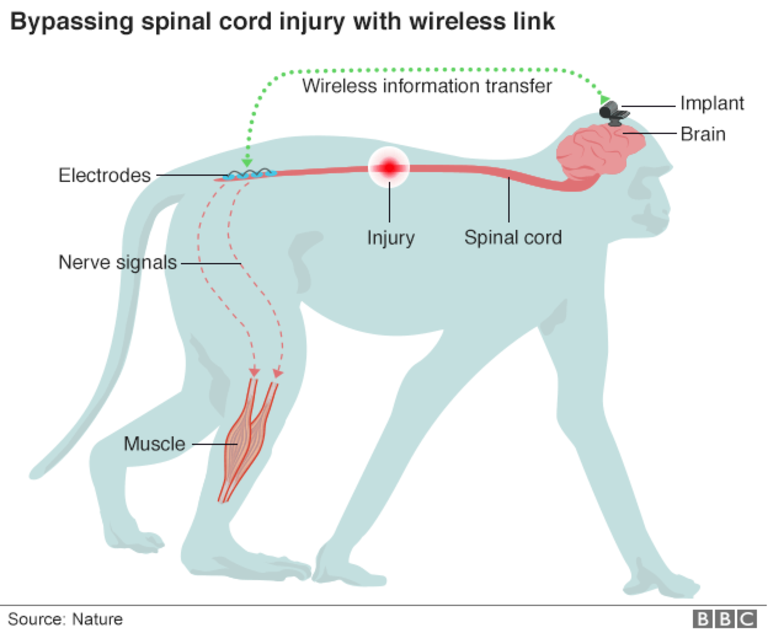Brain Wi-Fi and Paralysis
Photo by LTSTS via Wikimedia under the Public Domain
Wi-Fi is a common feature in American households and public areas that grant the masses their beloved access to the internet for dank cat memes and Rick Astley music videos; however, those magic radio waves that control your social life will soon be able to control your body as well.
While many may believe that we are living in the future with our photos and texts being beamed thousands of miles away to distant friends, there are still many problems that have been around for as long as humans have been roaming this planet. For many years, scientists and medical experts have been slaving away to find a way to treat paralysis. While many people believe that paralysis is not a big deal, 1 in 50 Americans are dealing with paralysis in some way. While some options are available for those who have partial paralysis, the ones who have a complete disconnect from their brain to their body part were left without a solution. For those who can be treated, the surgeries and medicine can be very expensive and there is always a chance that the surgery will go wrong and completely paralyze you. Fortunately, a group of scientists working at the Swiss Federal Institute of Technology recently made a breakthrough that could change the way we handle and, for the first time, treat paralysis. What may be more exciting is that the tool they used to accomplish such a task: Wi-Fi.
Before you go out and buy the most expensive router you can find to prevent paralysis, the trials that SFIT did were on Rhesus monkeys. However, the technology may be available to humans within the next 10 years. This may be worrisome for those who believe that the advancements in technology will lead to the enslavement of the human race by a group of superior robots. To those who are worried, don’t be. The way this new method works is actually quite fascinating.
To begin their trials, scientists studied a Rhesus monkey that was paralyzed in its back leg. The scientists then implanted a microchip into the part of the monkey’s brain that deals with movement. A second chip was then installed onto the lower end of the spinal cord that was disconnected from the brain. When activated, the chip in the monkey’s brain looks for spikes in electrical activity in the brain. The chip then relays that information to a nearby computer, using Wi-Fi. The computer deciphers the information sent from the chip into a readable message. That message is then sent, also using Wi-Fi, to the implant on the spine. The implant on the spine then tells the monkey’s spine to stimulate the appropriate nerves. The stimulation of the nerves then results not only in the movement of a paralyzed limb but the correct movement that the brain of the monkey wanted. What is also fascinating about the operation is that the whole process takes place in real time.

After the implants, the results showed that the monkey regained control of its leg within 6 days of the surgery. The monkey was then able to walk in a straight line on a treadmill. Dr. Gregoire Courtine, one of the researchers of the team, stated, “The movement was close to normal for the basic walking pattern, but so far we have not been able to test the ability to steer.”
While the method uses Wi-Fi, it seems unlikely that you will be able to control your limbs with your smartphone.
Conveniently, the electrical stimulation of nerves is not a new technology, which makes this method much more practical. Electrical stimulation has already been used in treating Parkinson’s. However, the ability to translate brainwaves into a readable language is still being discovered. So far, brainwaves have been able to control a robotic arm, but with this emerging technology, anything is possible.

Hi, my name is Jake Werner and this is my staff profile. I am a Copy Editor, the Fun Facts editor, and the editor of the Jetcast and this is my second...









Robert Corl • Dec 1, 2016 at 12:35 pm
Scientists have made some incredible discoveries in the oddest of ways. This article was interesting and informative. I could finally be a good dancer if I could control my limbs!
Cole Pearne • Dec 1, 2016 at 12:24 pm
Very interesting! I never would’ve thought that wi-fi would be the key to helping with paralysis.